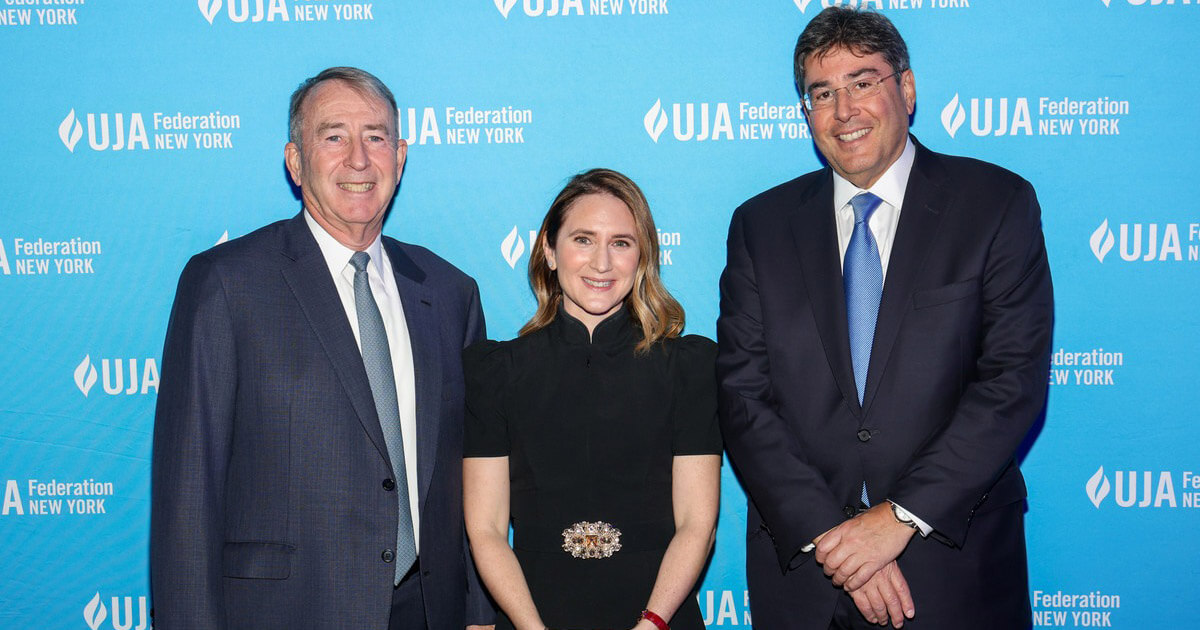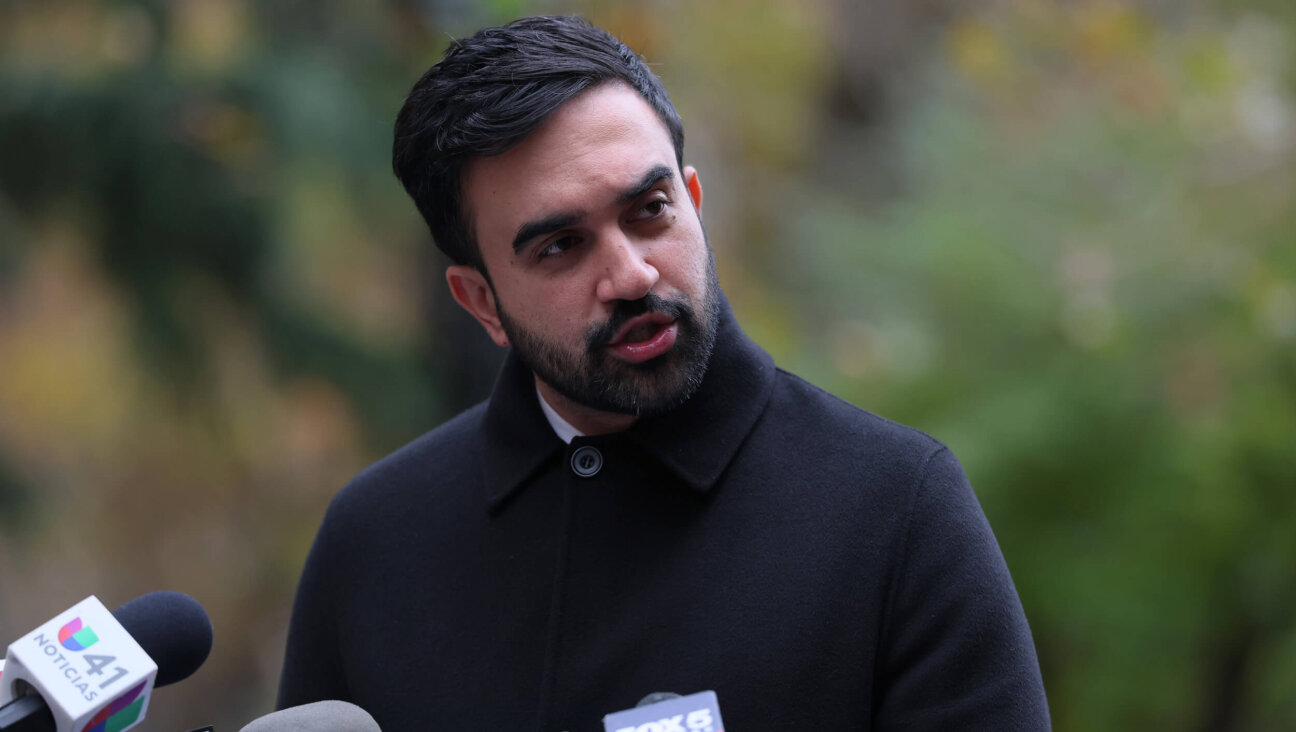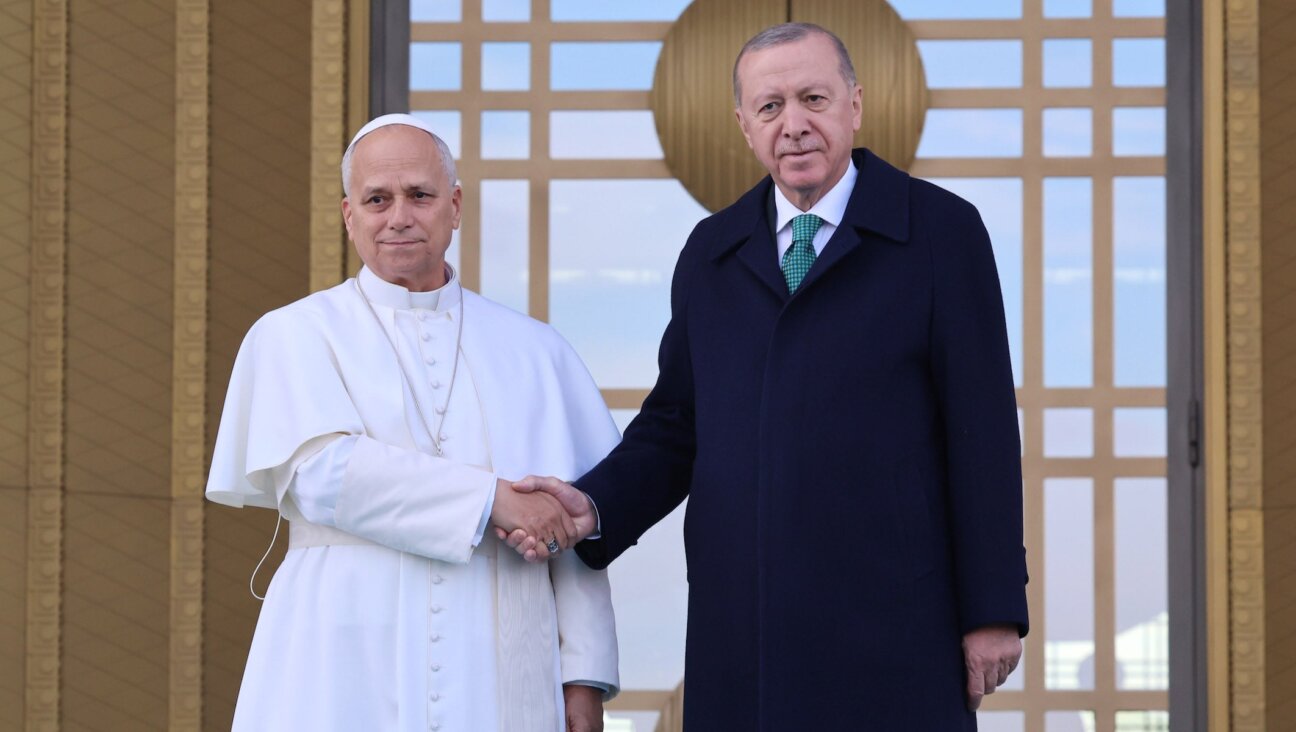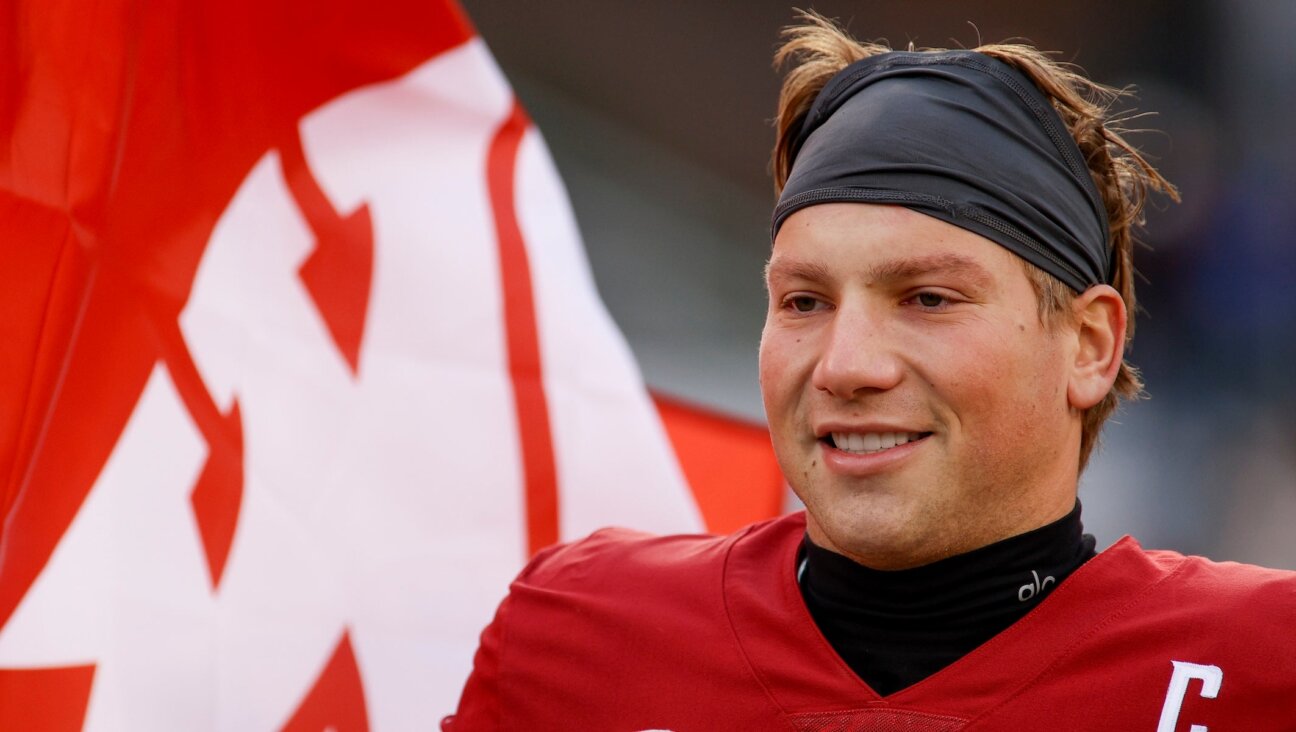Jason Greenblatt’s Kippah Went Missing, And The Israelis Were Baffled

Jason Greenblatt, left, with Mahmoud Abbas, president of the Palestinian Authority. Image by Getty Images
President Trump’s adviser on international negotiations just concluded his first trip to the Middle East and won a round of praise from all sides, for his openness and inclusiveness in approaching the Israeli-Palestinian conflict.
But some in the Israeli press and on social media noticed another fact: Greenblatt, who is Orthodox, showed up to his meetings both on the Israeli and on the Palestinians side, sans his trademark black kippah.
“Trump’s Envoy, Bareheaded, Walks Into Lion’s Den” stated a headline in the Jerusalem Post. The article noted that, “While whether or not someone wants to wear a kippah in public is very much a private matter and his own business, it was impossible not to notice.”
Even Reuters could not ignore the fact, including in the news agency’s report on Greenblatt’s diplomatic mission, the note that “Social media commentators were quick to point out that Greenblatt, an Orthodox Jew, had shown a notable degree of religious flexibility during his visit that may reflect a desire to be open and diplomatic: He has not worn his kipppah, a skull cap worn by religious Jewish men, all week.”.
Greenblatt is not the first Orthodox Jew to go on a diplomatic mission on behalf of the U.S. government, and, as it turns out, each official has his personal preferences when it comes to wearing the traditional skullcap at work. Former senator Joe Lieberman, perhaps the most well-known Orthodox Jewish politician, did not don a kippah on Capitol Hill. For that matter, neither does White House top adviser and presidential son-in-law Jared Kushner. Nor did Daniel Kurtzer, who served as U.S. ambassador to Israel. When Jack Lew became President Barack Obama’s Treasury Secretary, everyone wondered if he would wear a kippah on the job: He didn’t.
Public debates about prominent Jews’s level of observance have recently taken on a bitter tone, as some have taken to tracking Ivanka Trump’s Jewish practice, while others have told the “halachah,” or Jewish law, police, to go home.
Greenblatt’s case interested the Israelis, according to several ultra-Orthodox websites, because he has always worn his black yarmulke in America. There are numerous photos of Greenblatt in Trump Tower, advising Trump during the campaign, or holding meetings in New York, and in all he is wearing a kippah.
So why not in the Jewish state while meeting with Benjamin Netanyahu at the prime minister’s office?
Jonathan Urich, Netanyahu’s media adviser, sought to assure those in the ultra-Orthodox media who raised concerns about Greenblatt’s decision to show up to his meeting with the prime minister bareheaded. “You can calm down,” he told Jewish Insider “They prayed Mincha together yesterday, and had a Minyan in the cabinet room. When there is nothing wrong, you don’t have to look for people to blame.”
Back at the Jerusalem Post, diplomatic commentator Herb Keinon, offered another perspective:
“When Greenblatt was representing Trump’s business interests in New York, what he wore on his head was of absolutely no consequence,” he wrote. “But now that he has been thrust into the role of US mediator of Israeli-Palestinian peace, he does not want to look as if he identifies with one side. You can wear a kippa when negotiating land deals in New York, but when you are negotiating for peace in the Middle East, for perception’s sake, it may be best not to look like you live in Beit Shemesh.” That Israeli city is known for its Modern and ultra-Orthodox populations.
Will appearances make a difference?
Greenblatt tried his best during his week in the region to demonstrate his openness to all – from meeting with Palestinian residents in Jalazun camp to sitting down with Jewish settler leaders. If Greenblatt keeps up this policy in future trips, his bareheadedness will hardly be an issue.
Contact Nathan Guttman at [email protected]

















